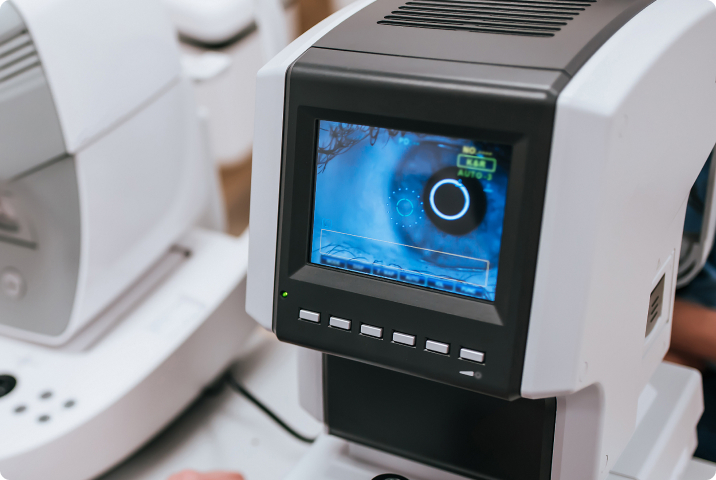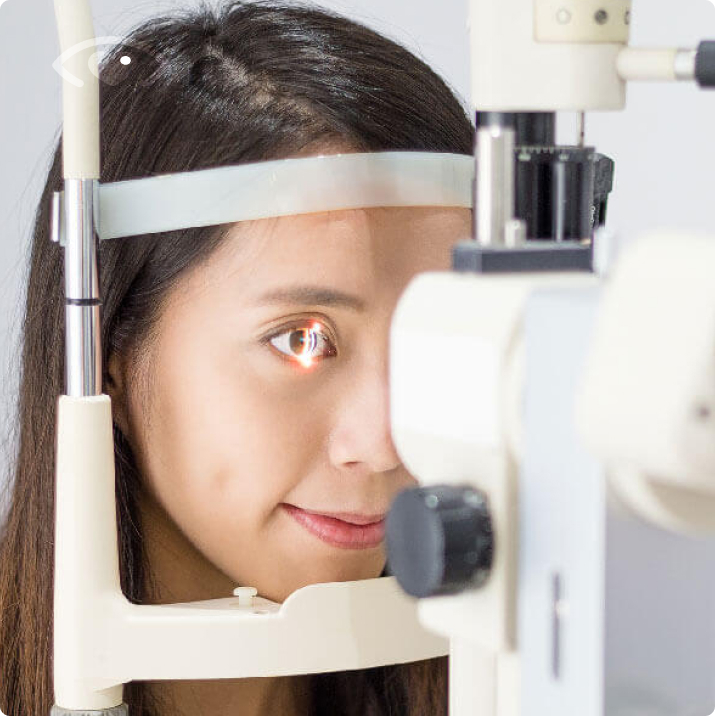Glaucoma Treatment


Glaucoma Has a Strong Hereditary Link

Most Cases Start Off With Peripheral Vision Loss

High Eye Pressure May Damage The Optic Nerve

These Increase Your Risk of Developing Glaucoma

Older Age Increases The Risk of Developing Glaucoma
Book an Appointment
Let our eye specialist conduct a detailed screening test for glaucoma – this typically includes a review of your family history, a visual field test and an eye pressure test.
Early Intervention to Slow Progression
There may not be a cure for glaucoma, but early detection and targeted intervention can do wonders in slowing its progression significantly, thus preserving sight.
Clear Vision for Much Longer
With early and sustained treatment, glaucoma’s progression can be significantly slowed, so you can enjoy decent eyesight decades on in your golden years.
Our Eye Clinic’s Experience & Expertise in Glaucoma Treatment
Our ophthalmologist Dr Leo Seo Wei has over two decades of experience treating and managing glaucoma effectively. Our clinic is well-equipped with modern ophthalmological equipment that can accurately diagnose glaucoma and is stocked with industry-recognized medicines which have been proven to treat glaucoma properly.
As glaucoma is a progressive disease and each individual has a different risk level, we treat each patient with a personalized treatment plan to ensure optimal preservation of sight in the long run.


Our Clinic Offers Comprehensive Ways to Combat Glaucoma
Glaucoma eye drops are the most common and easiest way of keeping one’s eye pressure under control. With many types to choose from, it is likely that there is one out there that suits your condition well with minimal side effects.
Some people may not be suitable for any of the glaucoma eye drops available. Fret not, this is where modern laser techniques come in to reduce your eye pressure effectively and precisely.
If laser surgery and medical eye drops still do not relieve your eye pressure sufficiently, there is always the final resort of eye surgery. Don’t let that scare you though – eye surgery may be more invasive and complex, but in the hands of an experienced glaucoma surgeon, you can be assured of a strong track record of safe and effective care.

- Glaucoma is a disease that damages the eye’s optic nerve. It typically happens when fluid builds up in the front of the eye, which increases eye pressure, damaging the optic nerve in the process.
- Left untreated, glaucoma will result in progressive and irreversible vision loss.
Primary Open-Angle Glaucoma
The most common type of glaucoma, this happens gradually due to the eye not being able to drain fluid as well as it should. As a result, eye pressure gradually builds and damages the optic nerve.Angle-Closure Glaucoma
This happens when a person’s iris is very near the drainage angle in their eye, thus blocking the drainage angle. When this happens, eye pressure rises very quickly. This is known as “acute glaucoma”, which is a medical emergency and must be attended to immediately to preserve sight.
Primary Open-Angle Glaucoma
- Typically develops slowly with no noticeable vision loss for years until advanced and irreversible damage has been done. This is why regular eye checks and early detection are so crucial.
- Gradual loss of peripheral vision
Angle-Closure Glaucoma
- Sudden vision loss
- Severe eye and head pain
- Hazy or blurry vision
- Nausea
- By checking your eye pressure
- By examining your optic nerve
- By testing your visual field (especially the periphery)
- They decrease eye pressure by helping the eye drain fluid better and/or decrease the amount of fluid produced by the eye
- With glaucoma being a progressive condition requiring long-term care, the patient must be diligent in taking the eye drops daily
- Like most medicines, these eye drops may have some side effects. Thus, finding the best suited one with minimal to no side effects for you is crucial.
Also known as Selective Laser Trabeculoplasty (SLT), this can be used as a primary (alternative) or complementary form of treatment to eye drops
Main Advantage: If this method alone can reduce eye pressure to an appropriate level, then there will be no need to take daily eye drops just yet, which may come with side effects
Main Disadvantage: The effect of laser treatment is usually temporary, thus most patients will likely need to go on daily medications eventually after a few years
- A last resort if all else fails, eye surgery for glaucoma is minimally invasive in nature and its main purpose is to drain the extra fluid out of the eye
- Can be done through placing a tiny tube inside the eye to facilitate drainage or by making a tiny cut in the eye’s drainage tubes to ease fluid buildup

